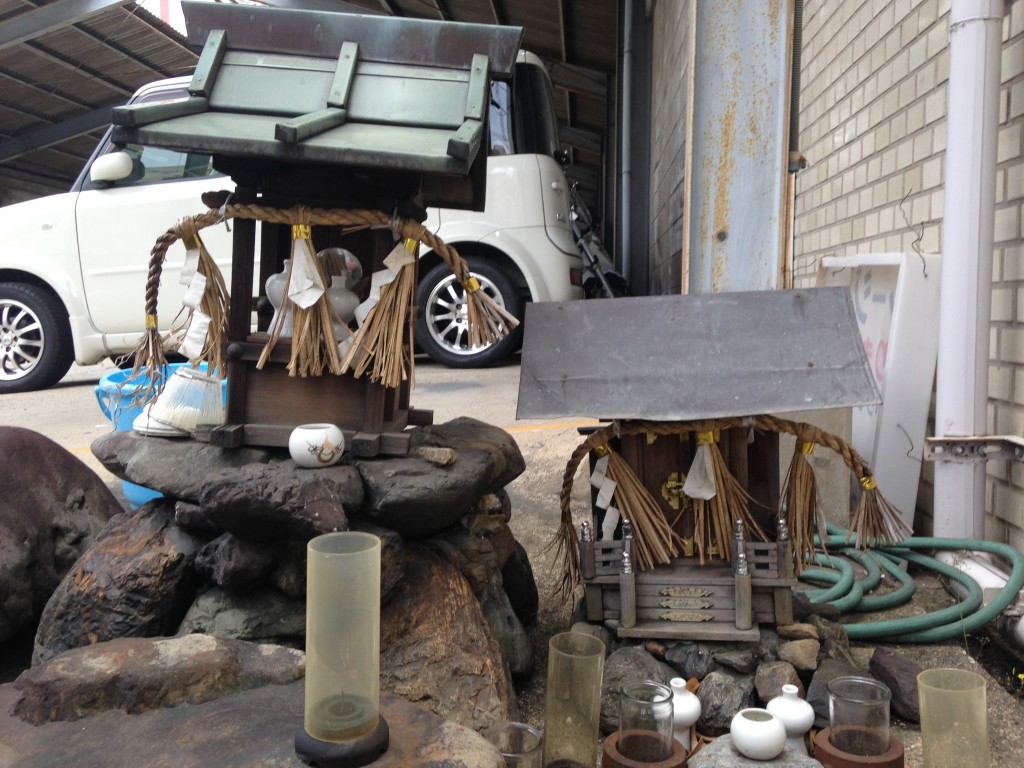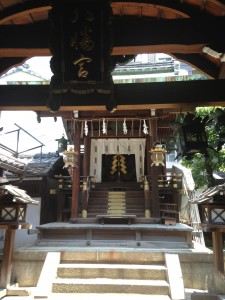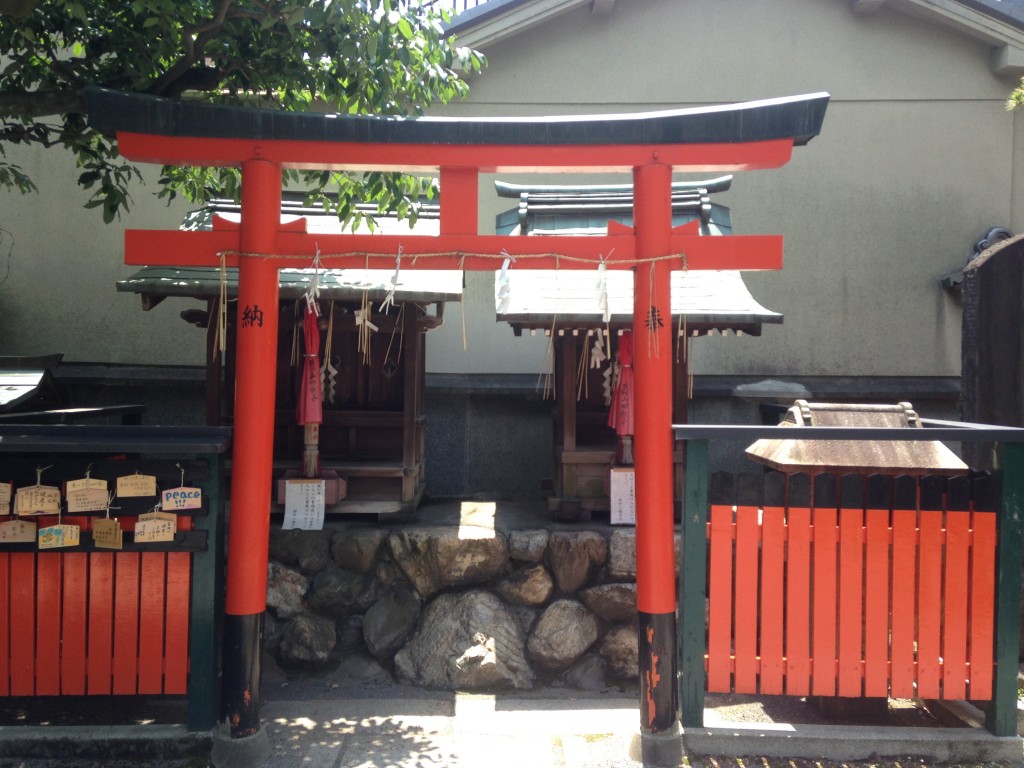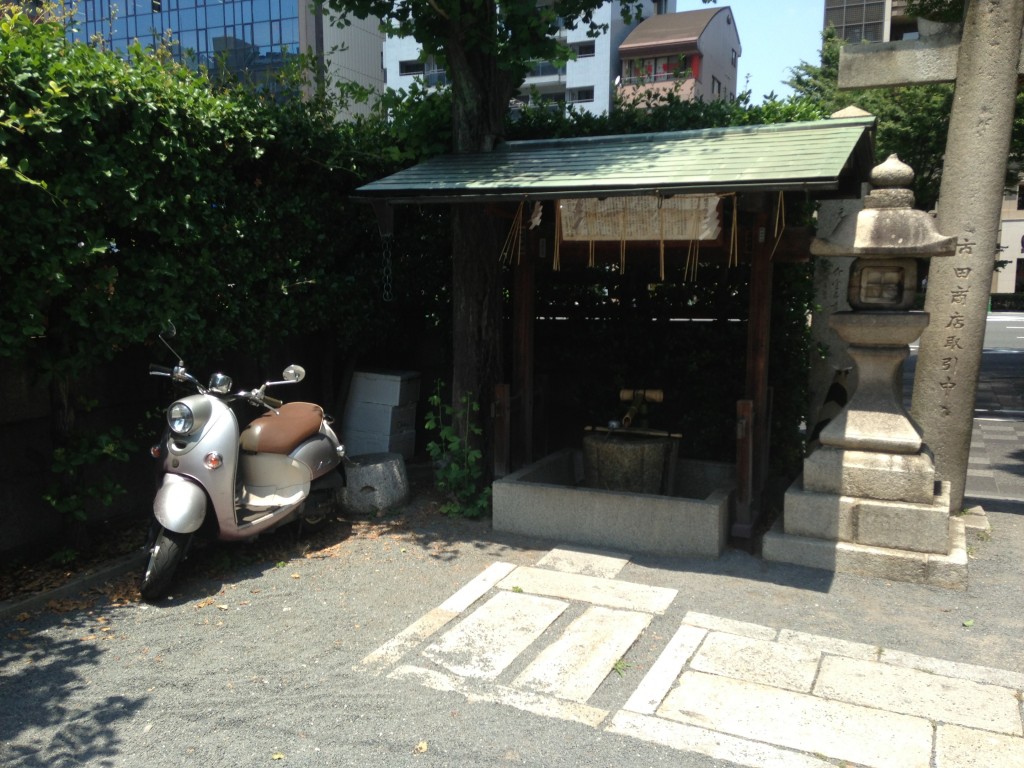
Some people like to describe Shinto simply as a nature religion. It’s not. Or rather it’s much more than that. Walking round Kyoto a few weeks ago made me aware of this when I came across two small shrines that struck me in different ways.

Looking up to the honden of Gosho Hachimangu
One shrine was in the form of small hokora in an area completely covered in concrete (picture above). Who knows, perhaps centuries ago it had stood among fine fields of greenery with a special spirit of place. Now however it acts uneasily as guardian of a car park. Yet it’s still cultivated by the neighbourhood, out of a sense of tradition.
The other shrine was Gosho Hachimangu, which stands on the central Oike Street. It’s now a small and neglected shrine, overlooked by the people who rush past. As its name proclaims, it’s a Hachiman shrine dedicated to the spirit of Emperor Ojin, his mother Empress Jingu and a female god called Himenokami. Formerly it stood not far away, but was transferred to its present position during World War II, due to forced evacuation – an interesting example of the movability of shrines. Like the parishioners, the kami had to take refuge elsewhere.
The shrine was founded when the first Ashikaga shogun, Ashikaga Takauji, invited the three deities to be guardian for his new residence. Now the shrine is known for promoting easy childbirth and for protecting small children. Everything about the shrine speaks to the ancestral side of Shinto, and to the cultivation of history and Japanese tradition.

Gosho Hachimagu is hemmed in now by buildings and main road

Ancient and modern - purification and pollution

Modern style ema, with three exclamations beseeching the three kami

Leave a Reply